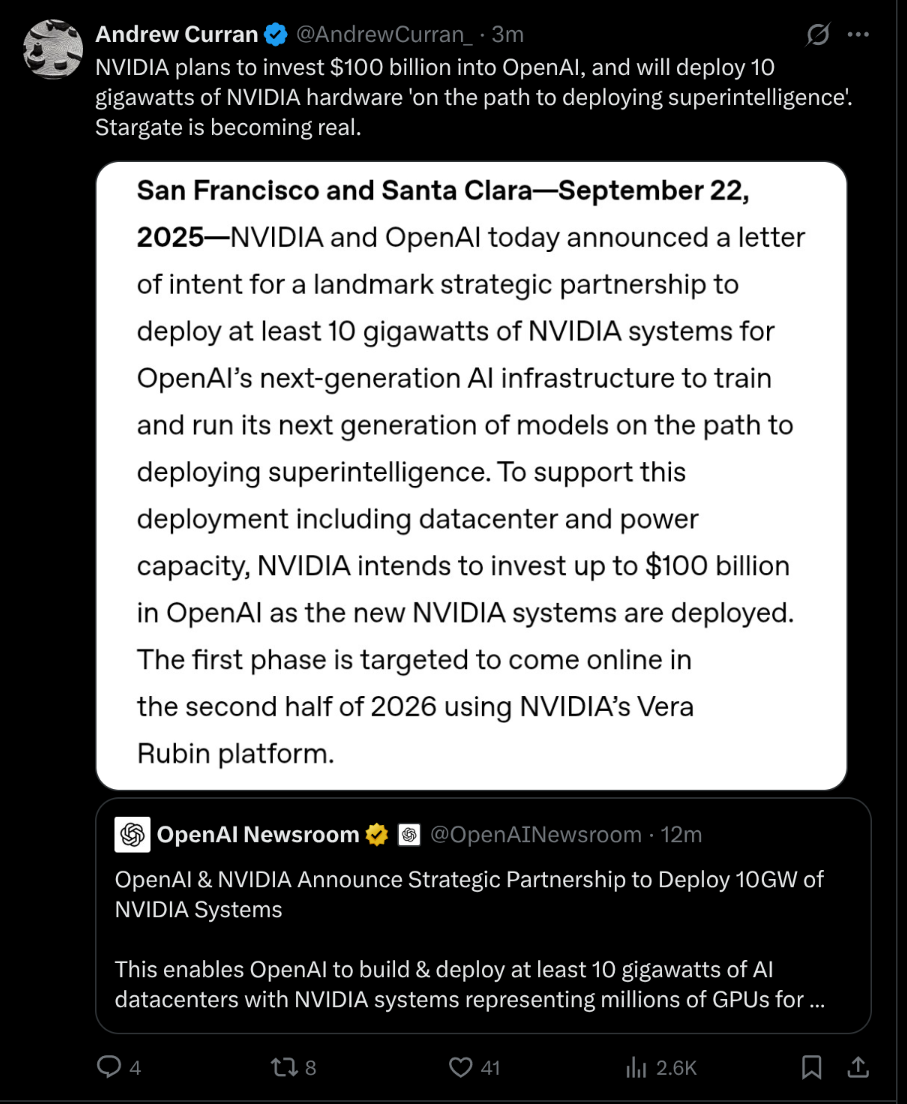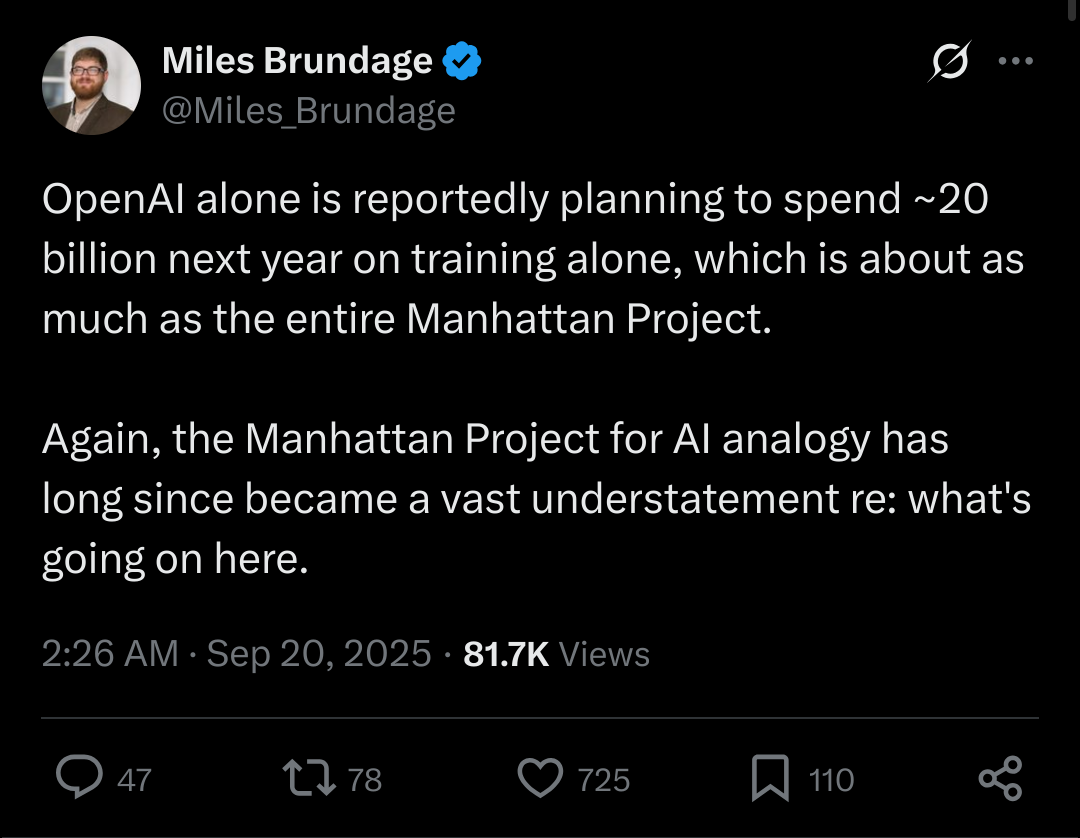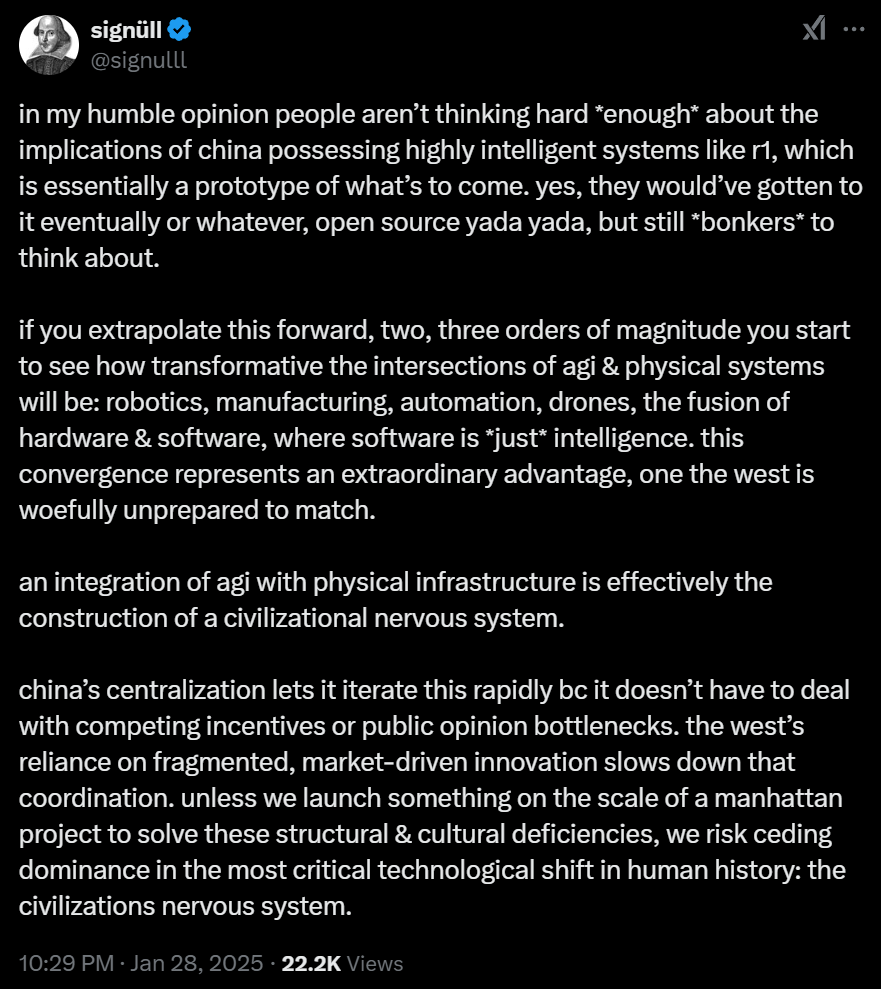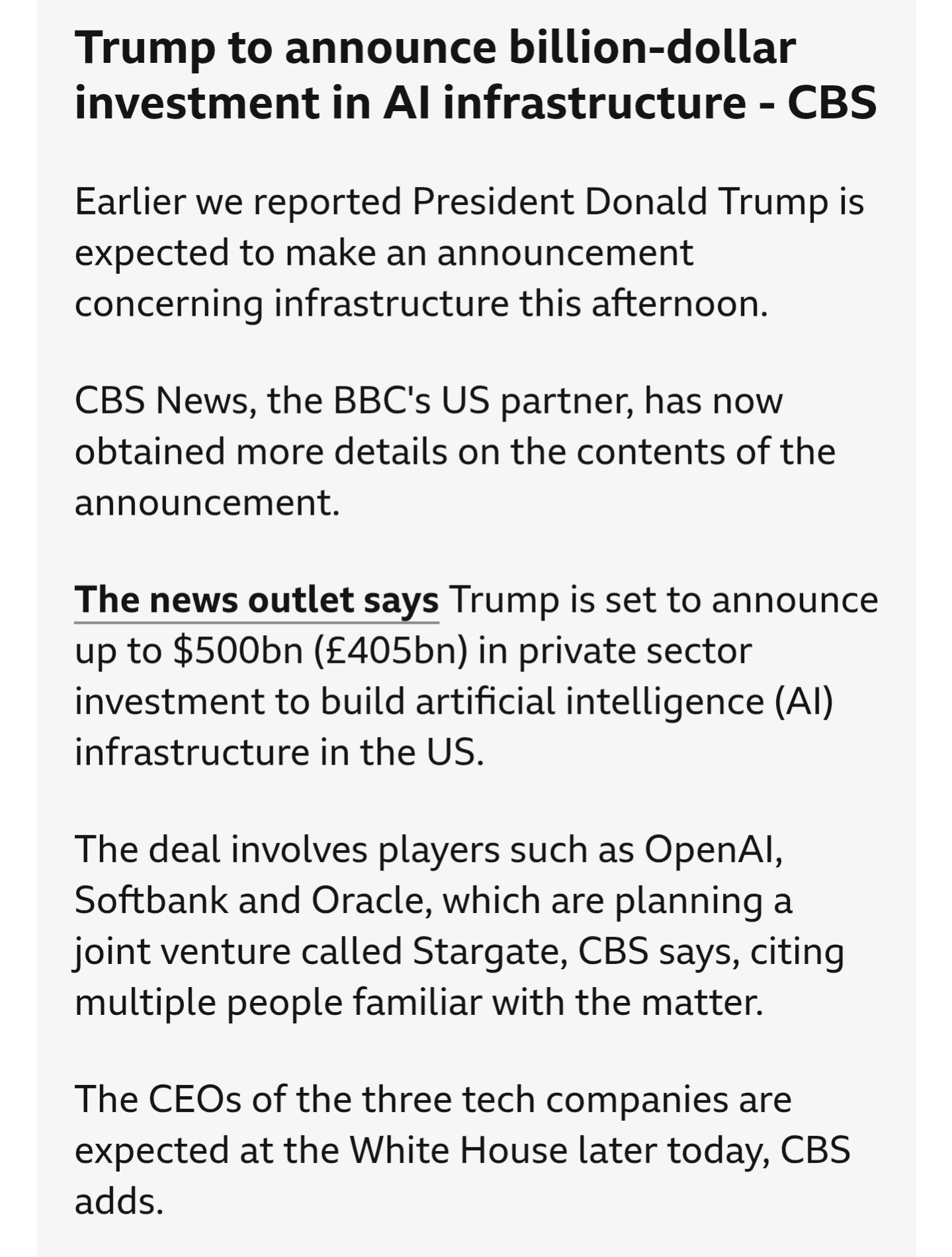
In "Situational Awareness: The Decade Ahead", Leopold Aschenbrenner predicts a US-government led project to build AGI in 2027/2028:
Somewhere around 26/27 or so, the mood in Washington will become somber. People will start to viscerally feel what is happening; they will be scared. From the halls of the Pentagon to the backroom Congressional briefings will ring the obvious question, the question on everybody’s minds: do we need an AGI Manhattan Project?
...
by late 26/27/28 it will be underway.
This market resolves YES if all of the following are true about a US government project:
"The core AGI research team (a few hundred researchers) will move to a secure location". For this market, we will use "at least 200 researchers" in place of "a few hundred researchers".
The project is "primarily in the domain of national security".
A "trillion-dollar [AI] cluster will be built". For this resolution criterion, there will need to be an outlay of a trillion dollars for compute in the project before market close.
This is one of a series of markets on claims made in Leopold Aschenbrenner's Situational Awareness report(s):
Other markets about Leopold's predictions:
People are also trading
I think this is happening. The US government is getting big tech to make a lot of purchases for the infrastructure/energy/GPUs. Individual companies are starting to wire their clusters together with fiber links. It's plausible that the government will demand they wire these clusters together into a big multi-corporate network within the next five years, so the military can train the biggest AI.
@MalachiteEagle Even with fiber links, do you know how close the clusters would need to be physically before distance becomes a major bottleneck?
i.e. could civilians and/or adversaries infer this is what is happening because clusters would be built unusually close to each other?
Always figured that would be the biggest issue but haven’t looked into it that much.
@elf Distance matters, but probably not as much as you would think. From the moment you're using fiber links for training runs, the overheads mean that it's unlikely there will be a huge difference between 50km and 500km. Maybe at 5000km then you need to start doing other engineering tricks like asynchronous gradient descent. But for 500km you're talking about 5ms for a round trip. If you're doing one training batch per second then that's fine.
@MalachiteEagle Wow, ok in that case your theory seems much more likely.
It's great because it enables it to be hidden in plain sight and doesn't raise as much suspicion as suddenly having a bunch of the best researchers mysteriously leaving frontier labs. You'd have plausible deniability as it would make sense for each hyperscaler to want to link up their own datacenters & the multi-corporate link would need far fewer people to be in the know until it's operational.
Dylan Patel mentions (https://www.youtube.com/watch?v=pE3KKUKXcTM&t=1142s) an advantage for China is that they already have high energy refineries with enough power in a single location to use as covert data centers.
But do you think that advantage dissipates if your theory pans out?
Also, why are you spending so little on this? It says you've only spent 25 mana on this market but you seem pretty bullish. Is it the trillion dollar resolution condition or the moving to a secure location that gives you pause?




